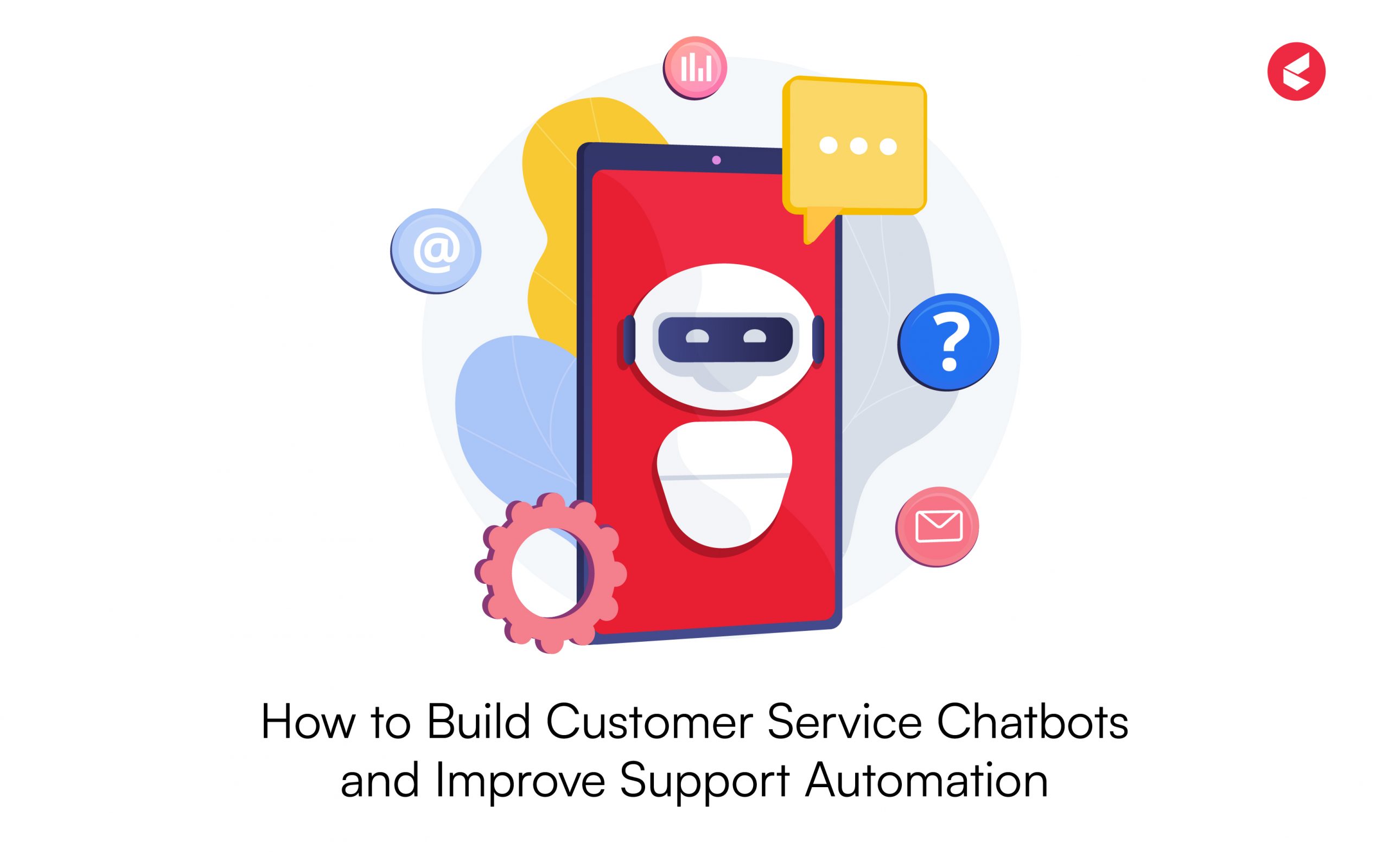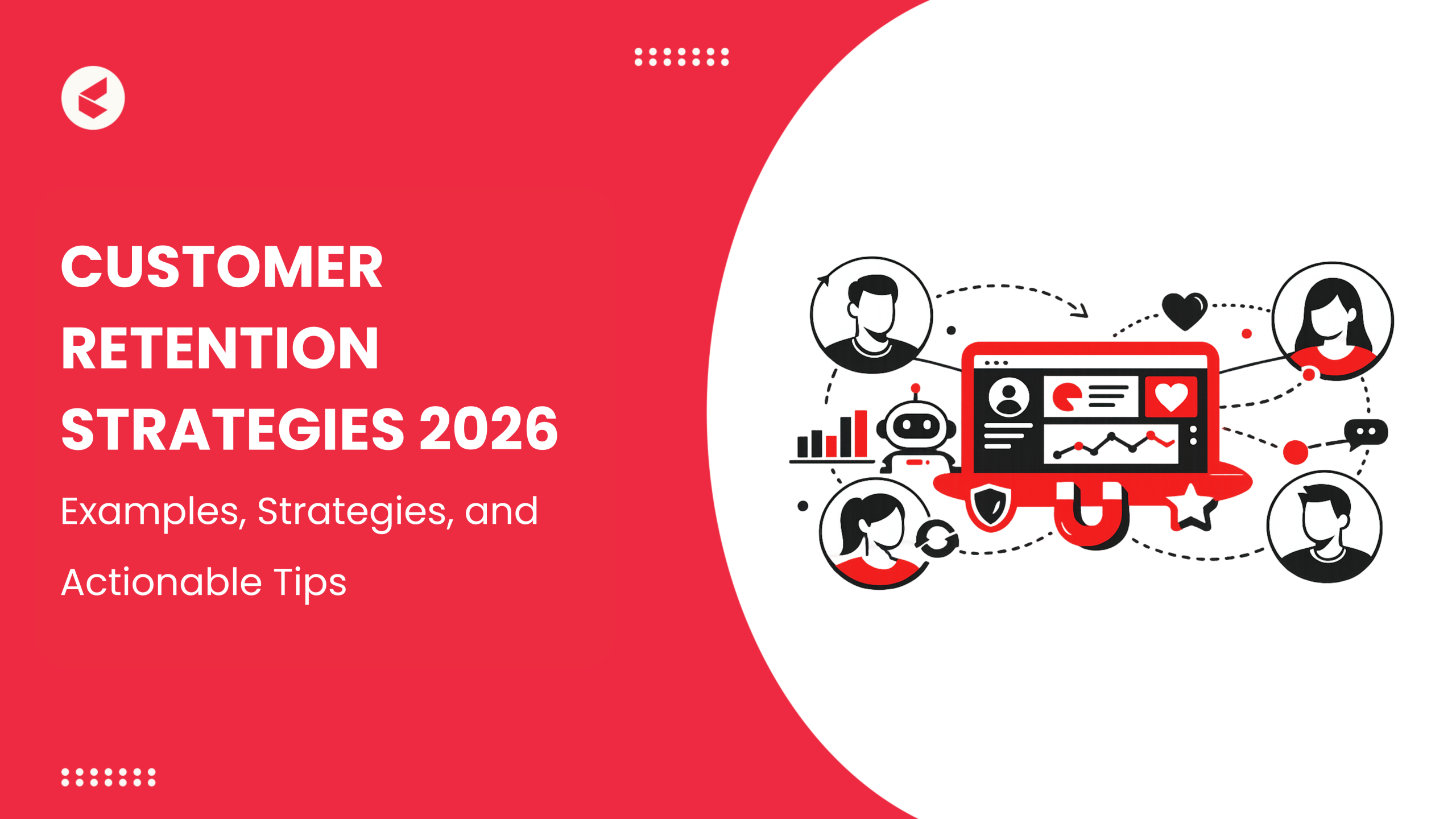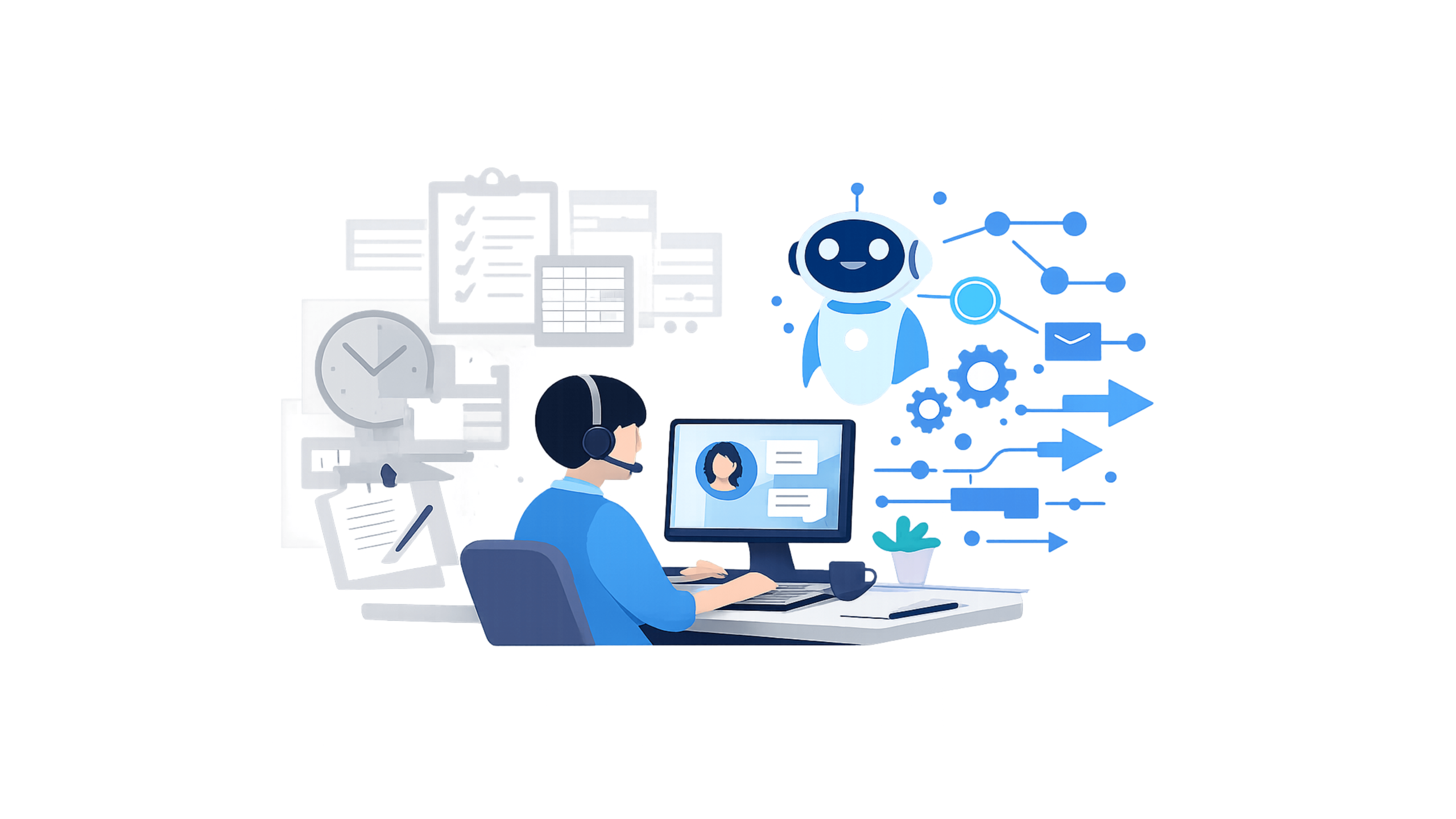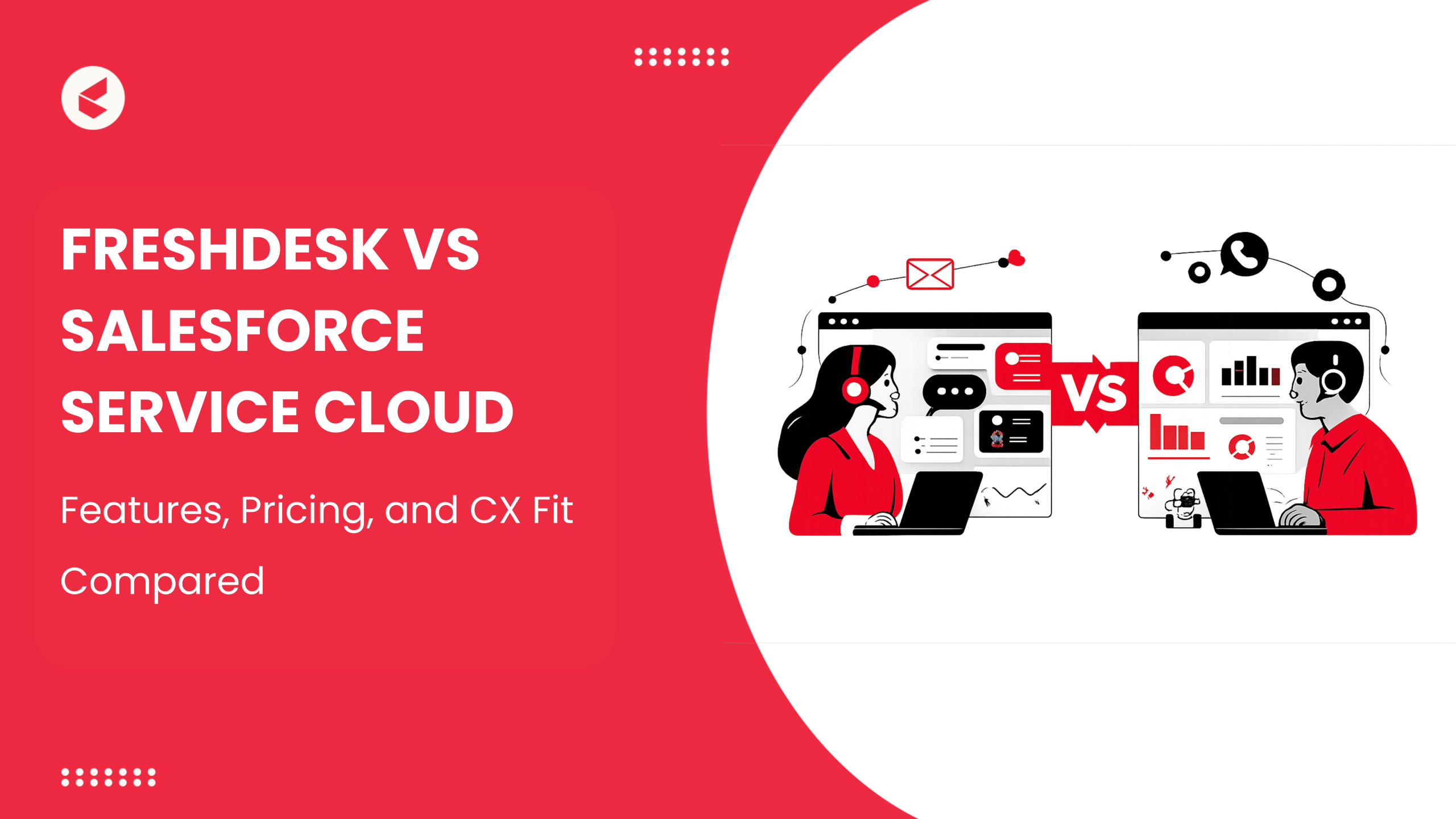Consider this scenario: You require immediate technical support for a phone you bought, and it is late at night. When you reach out to the support team, you are notified to contact the team during work hours. Isn’t that frustrating?
Now, imagine the same scenario. But the difference this time is that you are assisted instantly. This is essentially what customer support chatbots can provide for your customers.
Remarkably, according to a recent Deloitte analysis on generative AI, up to 15% of contact centers already utilize AI-powered customer care bots, and another 26% intend to do so this year alone.
If you want to learn how to create AI chatbots for your customer service operations, this article is for you. It will cover everything from the foundations to their numerous types and benefits.
A Chatbot for Customer Service: What Is It?
To cope with the challenges that customer support teams have been facing, businesses have made the smart choice of adopting chatbots. Chatbots use artificial intelligence (AI), machine learning, and natural language understanding (NLU) to imitate human-like conversations. It allows businesses to automate tasks that do not require human intervention and helps improve overall customer experience.
The first chatbots, like ELIZA from MIT in the 1960s, could only do simple tasks like keyword recognition and pre-written responses. Nowadays, chatbots have advanced significantly. Thanks to the advancements in generative AI, chatbots today are much smarter. Modern AI-driven chatbots enable customer support teams to respond to inquiries faster and more efficiently.
Chatbots for Customer Service: 9 Distinctive Features
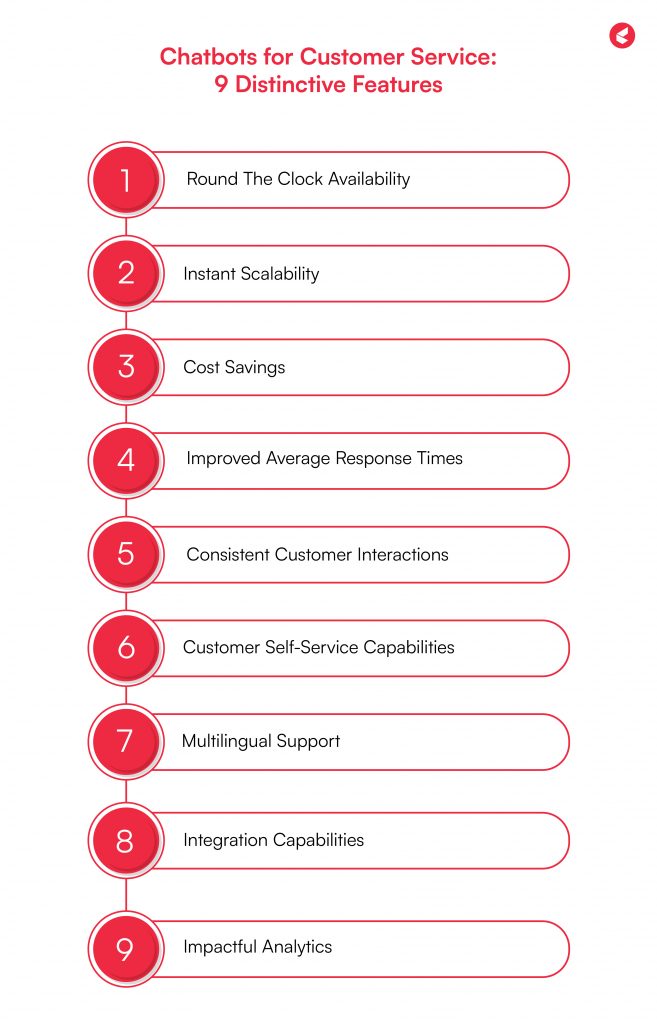
If you are considering building a customer service chatbot for your organization, you may have wondered, “What am I going to get out of this process?” and “Are they worth the investment?”. Let’s briefly glance over the benefits on offer:
1. Round The Clock Availability
We have all been in this situation: you need a query answered and call the business’s contact center only to learn they are closed for the day. This can be problematic from a business standpoint, as today’s customers are extremely demanding. Many companies now rely on AI automation and support tools like Agentra to ensure customers get assistance even outside regular business hours.
While providing 24/7 customer support with live agents is possible, chatbots can do the same with a fraction of the resources required.
2. Instant Scalability
Recently employed customer service representatives typically take three to six months to reach maximum productivity. Scaling up operations, if needed, can be challenging when an agent can only manage one consumer at a time.
On the other hand, AI chatbot solutions for customer service can handle multiple customers simultaneously and scale up or down based on your requirements. Customer service chatbots can also scale across channels, such as running the same chatbot across various platforms like websites, Facebook chatbot, and WhatsApp chatbot etc.. to handle customer queries simultaneously.
3. Cost Savings
Operating a contact center with live agents is an expensive endeavor. In addition to salaries, you must pay your agents extra for overtime; if they work irregular hours, you have the costs associated with training them.
According to Business.com, support agent’s training costs can range between $500 and $1500 for a single day of in-person training. With customer service chatbots, you save on all of the above and limit your spending to your subscriptions (based on your usage) and AI slpend.
4. Improved Average Response Times
Average Response Time is one of the key metrics used to measure a contact center’s productivity. As touched upon earlier, customers today expect instant responses to their queries. Customer service chatbots can help improve this metric significantly.
According to HubSpot’s State of Service Trends Report for 2024, over 90% of CRM leaders said customer service bots significantly reduce their average response times.
5. Consistent Customer Interactions
The human element of customer service agents can often result in errors or, in rare instances, conversations ending badly.
On the other hand, customer service chatbots do not have good or bad days and, hence, always have consistent interactions with customers. While they are not entirely error-free, they significantly reduce human error.
6. Customer Self-Service Capabilities
Not all customers want to interact with a service agent for every issue. Many prefer to find solutions independently, which is where self-service chatbots excel. These solutions allow customers to conveniently access information quickly, troubleshoot problems, or complete tasks—like tracking orders, resetting passwords, or checking account details.
7. Multilingual Support
Global business operations require you to offer top-notch customer service in your business domain. That said, hiring and training a sizable team of agents is time-consuming and costly, especially if you’re looking for candidates proficient in multiple languages. This approach is often inefficient for businesses aiming to scale globally.
Chatbots can easily handle inquiries in various languages and help businesses provide consistent, high-quality support worldwide without recruiting and training specialized staff for each region.
8. Integration Capabilities
Chatbots thrive on customer data; the more you give them access, the better they can serve your customers. Where a customer service agent would have to manually look for information to help customers (we have all experienced being put on hold), chatbots can scour all the integrated databases to give customers instant responses.
For example, Kapture’s Customer Service bots support over a thousand integrations via API.
9. Impactful Analytics
AI chatbot solutions for customer service feature powerful analytics capabilities that can help you with crucial productivity metrics to determine areas of improvement. They can also help identify patterns and changes in market trends and customer expectations and use sentiment analysis to gauge how customers respond to your customer service.
Types Of Chatbots
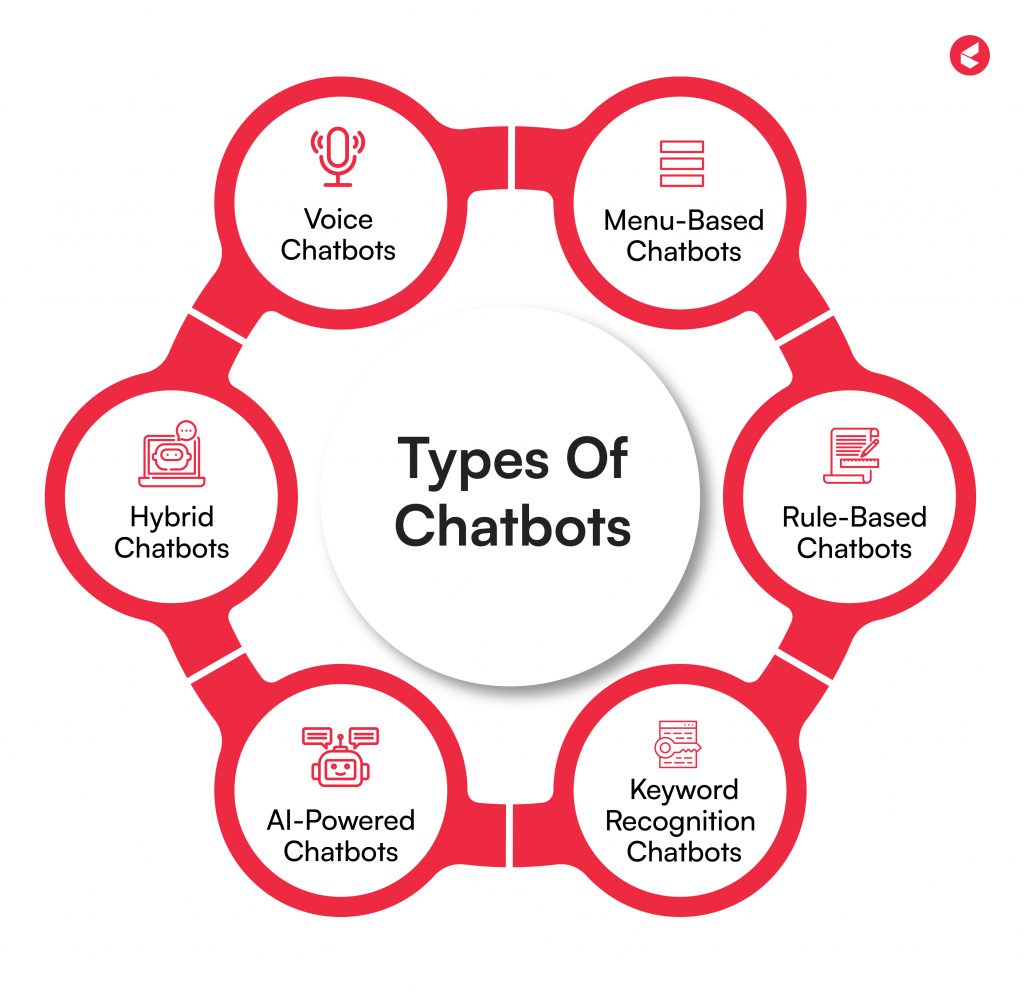
Having discussed the benefits of chatbots, it is important to understand that there are several different kinds of chatbots that specialize in different functions. Let’s look at the various types of chatbots to help you identify the option that best suits your needs:
1. Menu-Based Chatbots
Menu-based chatbots are the simplest versions of customer service chatbots. As the name suggests, they essentially guide a customer through a series of menus. Think airline reservation systems or ATMs.
These chatbots are the easiest to implement but cannot handle complex queries, so they are best suited for a simple interactive FAQ in your customer service arsenal.
2. Rule-Based Chatbots
Rule-based chatbots have more features than menu-based chatbots. Because they are taught to adhere to a predefined set of guidelines using “if-this-then-that” reasoning, they work well as simple chatbots for customer support.
However, they are not without limitations. They are limited in the circumstances they can handle through programming, and they have difficulty interpreting ambiguous inputs.
3. Keyword-Recognition Chatbots
The keyword-recognition chatbot bridges the two more basic chatbot kinds described above and fully completes AI-powered customer service bots. By using artificial intelligence’s fundamental capabilities to recognise words or phrases in a customer’s question, these chatbots tailor their response accordingly.
For example, if a customer asks, “How do I reset my password?” A keyword-recognition chatbot will identify the keywords “reset” and “password” and provide a step-by-step guide on acting.
They can answer a wider range of inquiries than menu—or rule-based chatbots but struggle with complex questions or ambiguous user input. In the previously given scenario, what if the client queries, “My password isn’t working; what should I do?” instead? The customer’s question can be difficult for the chatbot to understand.
4. AI-Powered Chatbots
Chatbots with AI capabilities are intended to uncover a user’s query and context by utilizing AI and machine learning techniques. You probably use these AI-powered customer service bots daily.
These AI chatbot solutions for customer service can improve as they learn from previous interactions. However, they require a lot of data to be trained and are difficult to implement.
5. Hybrid Chatbots
Rule-based and AI-powered chatbots are combined in hybrid chatbots. They are the pinnacle of customer service chatbots, as they combine the AI-based chatbot’s ability to understand the context and intent of complex queries with the reliability and consistency of rule-based chatbots.
However, these capabilities come at a cost, as they are expensive and complex to build and maintain.
6. Voice Chatbots
Notably, natural language can be used to communicate with hybrid chatbots. This is the primary, if not sole, distinction between them and voice chatbots. Voice bots use Text-to-Speech (TTS), Speech-to-Text (STT), and Automatic Speech Recognition (ASR) technologies separately or in combination, depending on the use case.
The most popular uses of this technology are Siri, Alexa, and Google Assistant.
How To Create Customer Service Chatbot?
The simplest way to start using them is to use a platform like Kapture, which allows you to deploy customer service chatbots.
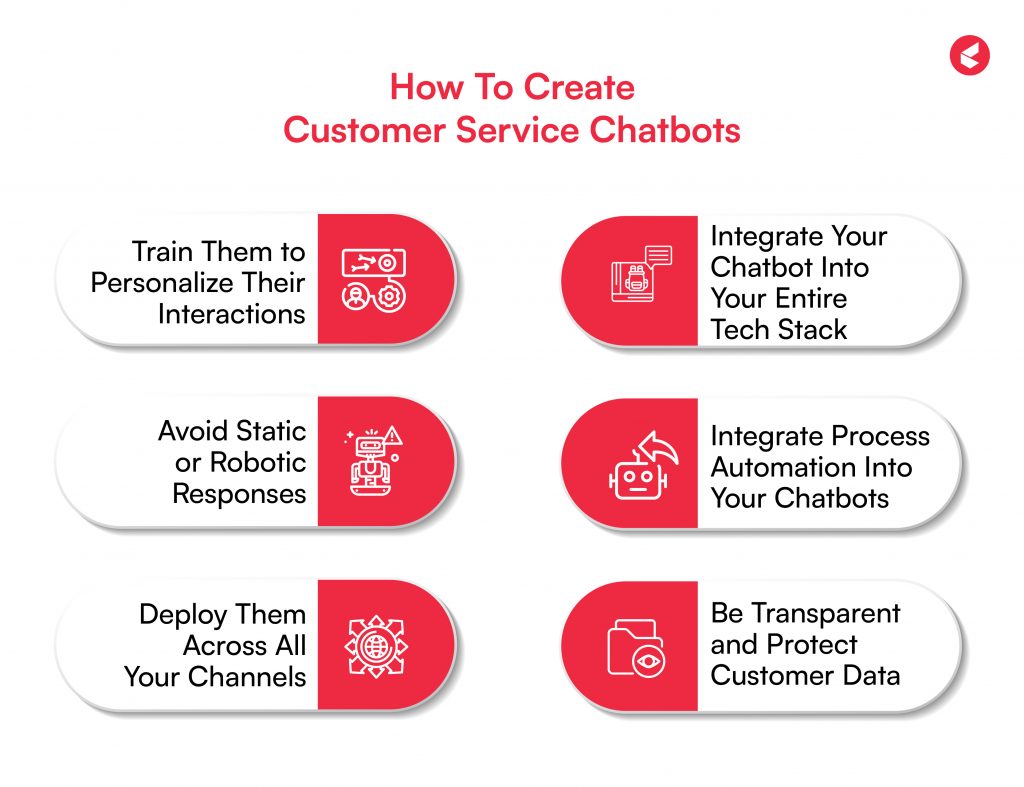
However, to get the most out of your chatbot, customize it.
Here are a few starting points to help you:
- Train Them to Personalize Their Interactions: Over 75% of customers expect personalization today. Train your chatbots to use historical data to interact with customers over their preferred medium. Take the interaction up a few notches by starting with a conversation with a personalized greeting.
- Avoid Static or Robotic Responses: AI-powered customer service bots can mimic human line speech. Use their NLP capabilities and their ability to learn over time to converse engagingly and dynamically. Train them to take a proactive approach to customer service by considering the customer’s history and current mood and offering additional recommendations to help solve their problems.
- Deploy Them Across All Your Channels: Don’t restrict your chatbot to a few popular channels. Remember, not everyone is tech-savvy, and everyone feels comfortable communicating via a specific medium. Ensure that your chatbot caters to all of them.
- Integrate Your Chatbot Into Your Entire Tech Stack: As we’ve already discussed, chatbots are made of data. Integrate your chatbots with the rest of your tech stack to enable them to give your consumers more accurate information and to help you identify areas for improvement through analytics.
- Integrate Process Automation Into Your Chatbots: Even though today’s chatbots can handle complicated inquiries, they can sometimes transfer customers to live representatives. To ensure a smooth transition, incorporate process automation. This contains all the data the representative requires to assist the client immediately.
- Be Transparent and Protect Customer Data: Data privacy is a major pain point for customers today. Give your customers easy access to all your terms and conditions to let them know how you will be using their data and to assure them that you meet all the data privacy and security industry standards to keep their data safe.
Build Your Customer Service Chatbot With Kapture
The use of chatbots in customer service is fast becoming crucial as customer expectations continue to rise. Chatbots are a very powerful tool for improving customer relationships and streamlining support operations. Their numerous benefits explain this, including quick scalability, improved response times, and round-the-clock accessibility.
Ready to build your first customer service chatbot? Kapture’s self-serve bots allow you to easily create tailored solutions that enhance customer support while safeguarding data privacy.
Book a demo and discover how Kapture can help you elevate your customer service experience today!
FAQs
As advanced as they are, they cannot replace your entire workforce. However, they can significantly help reduce the burden on your agents by addressing many customer queries.
The cost of a customer service chatbot depends on its type and its complexity. That said, they are worth their weight in gold and more.
Sentiment analysis is a data mining technique used to analyze customer service interactions. The goal is to understand sentiment toward a specific product, an interaction, or the organization.
Customer service chatbots can automate the following processes within your customer service operations:
– Generating service tickets and routing them based on priority.
– Initiate workflows like processing cancellations and issuing refunds.
– Automate manual case management tasks.
– Generate reports, to name a few.
